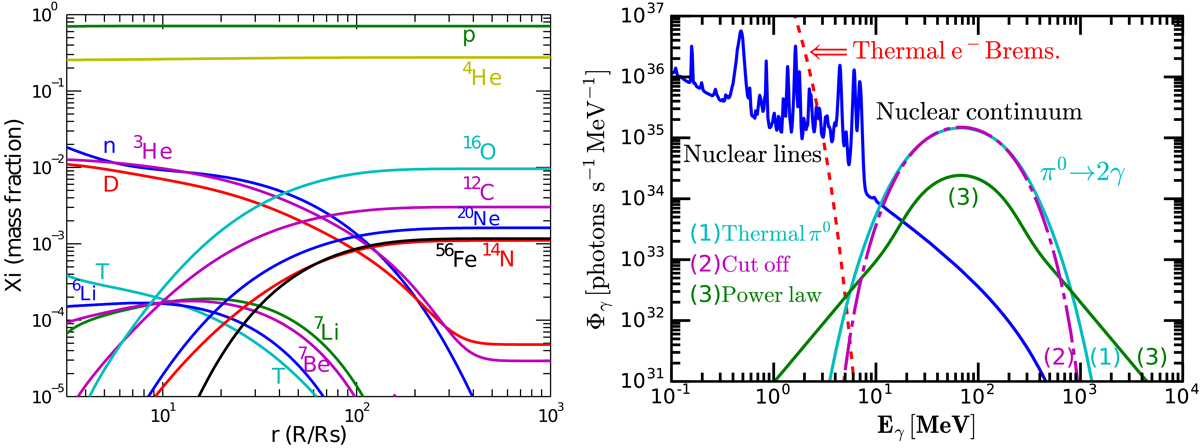Fig. 2.

Radial chemical evolution (left) and the disk γ-ray luminosity (right). The results are calculated for the ADAF model for parameters m = 10, α = 0.1, ṁ = 10−3, β = 0.5, and the initial solar composition. Left panel: evolution of elements. The light elements and the initial nuclei with mass fraction Xi > 10−3 are explicitly shown. Right panel: disk differential luminosities (in units of photons/cm2 s MeV) of nuclear γ-rays consisting of resolved γ-ray lines and the continuum composed of superposition of broad nuclear lines, neutron capture radiation, and nuclear bremsstrahlung emission). The curves denoted as (1), (2), and (3) show the disk differential π0-decay γ-ray luminosities: curve (1) corresponds to the nominal Maxwellian distribution of particles, curve (2) corresponds to a Maxwellian distribution with a sharp cutoff at Ek = 4kTi, whereas curve (3) corresponds to the Maxwellian distribution that has a power-law tail with an index p = 2.0 for Ek > 4 kTi. The luminosity of the thermal electron bremsstrahlung (red dashed line) is also shown. The advection factor for this model is f = 0.86 and the accretion luminosity is Lacc = 1.4 × 1036 erg s−1. The integrated luminosity that the electrons radiate away through bremsstrahlung is Le = 1.9 × 1035 erg s−1, the luminosity in the nuclear lines and continuum is LN = 3.3 × 1031 erg s−1, and the luminosity of radiation from decays of the secondary π0-mesons is Lπ = 9.3 × 1033 erg s−1.
Current usage metrics show cumulative count of Article Views (full-text article views including HTML views, PDF and ePub downloads, according to the available data) and Abstracts Views on Vision4Press platform.
Data correspond to usage on the plateform after 2015. The current usage metrics is available 48-96 hours after online publication and is updated daily on week days.
Initial download of the metrics may take a while.


